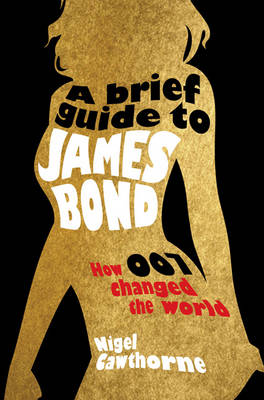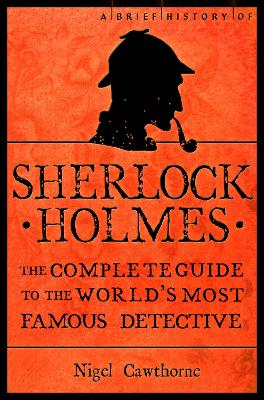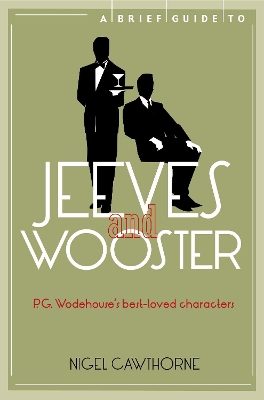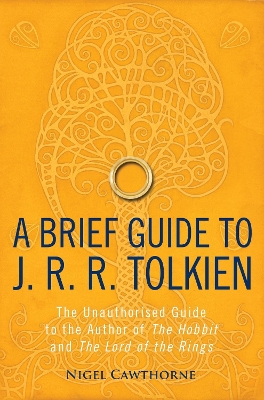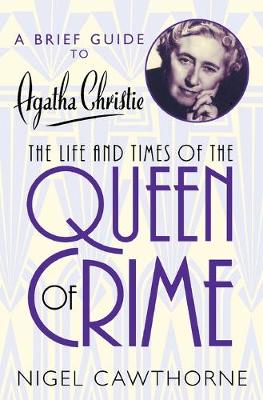Brief Histories
6 total works
The world's fascination with Bond is unstoppable. James Bond is the greatest British fictional hero of the post-war era. He also has a huge following in the US - and around the world - as a legendary Cold War warrior, and now as a daredevil able to take on the villains of the post-Cold War world. The Bond books are all in print. Today, Sebastian Faulks is writing new stories while Charlie Higson is writing children's versions.
In this comprehensive guide to Ian Fleming, the books, the films and the world that was created out of 007, Nigel Cawthorne uncovers Bond's allure. It comes with special sections on the main characters - Q, M, the Bond Girls, and the women who first inspired them; the cars, and the incomparable baddies. It will be the ideal gift for fans and aficionados alike and will be published to coincide with the 50th anniversary of DOCTOR NO; the new film is scheduled for autumn 2012.
Created by Sir Arthur Conan Doyle in 1887, Sherlock Holmes appears in four novels and fifty-six short stories. Although Holmes was not the first literary detective, he continues to have a perennial allure as the ultimate sleuth.
As Holmes is being re-introduced to a new audience through TV and film, Cawthorne introduces the general reader to Holmes and his creator Arthur Conan Doyle. He gives a full biography of author as well as his creation, including his resurrection following his unlikely death at the hands of arch enemy, Moriarty. Cawthorne also surveys the world of Holmes, looking at Victorian crime, the real characters behind Dr Watson and Inspector Lestrade, as well as the world on the doorstep of 22b Baker Street.
A comprehensive guide to P. G. Wodehouse's two best-loved comic characters, Bertram Wilbeforce Wooster and his valet ('Reggie') Jeeves, Bertie's friends and relatives and their world of sunshine, country houses and champagne.
Although the stories may seem quintessentially English, they were for the most part written in the United States by a man who spent more than half his adult life there, eventually becoming a citizen in 1955. The first stories involving the two characters are even set in New York, while those that aren't are set in an England that has never existed, contrived to appeal to an American audience. Cawthorne offers fascinating insights into Wodehouse's world, his life - on Long Island and elsewhere - the wonderful short stories and novels and the many adaptations for stage and screen.
A very readable overview of Tolkien and his work, incorporating a brief biography, an examination of the books and a look at the process of filming his work, including The Hobbit and The Lord of the Rings saga. It explores how Tolkien's background as a medievalist and linguist informed the languages of Middle-earth, the influence of his Catholicism and Tolkien's legacy in fantasy.
A timely book to coincide with the first of Peter Jackson's two keenly awaited Hobbit films.
Agatha Christie's 80 novels and short-story collections have sold over 2 billion copies in more than 45 languages, more than any other author. When Christie finally killed off her Belgian detective, Hercule Poirot, the year before she herself died, that `detestable, bombastic, tiresome, ego-centric little creep' in Christie's words, received a full-page obituary in the New York Times, the only fictional character ever to have done so. From her first novel, The Mysterious Affair at Styles, a Poirot mystery, to her last, Sleeping Murder, featuring Miss Marple, Crawford explores Christie's life and fiction.
Cawthorne examines recurring characters, such as Captain Arthur Hastings, Poirot's Dr Watson; Chief Inspector Japp, his Lestrade, as well as other flat-footed policemen that Poirot outsmarts on his travels; his efficient secretary, Miss Felicity Lemon; another employee, George; and Ariadne Oliver, a humorous caricature of Christie herself.
He looks at the writer's own fascinating: her work as a nurse during the First World War; her strange disappearance after her first husband asked for a divorce; and her exotic expeditions with her second husband, the archaeologist Sir Max Mallowan.
He examines the author's working life - her inspirations, methods and oeuvre - and provides biographies of her key characters, their attire, habits and methods, including Poirot's relationships with women, particularly Countess Vera Rossakoff and Miss Amy Carnaby. In doing so, he sheds light on the genteel world of the country house and the Grand Tour between the wars.
He takes a look at the numerous adaptations of Christie's stories for stage and screen, especially Poirot's new life in the eponymous long-running and very successful TV series.
